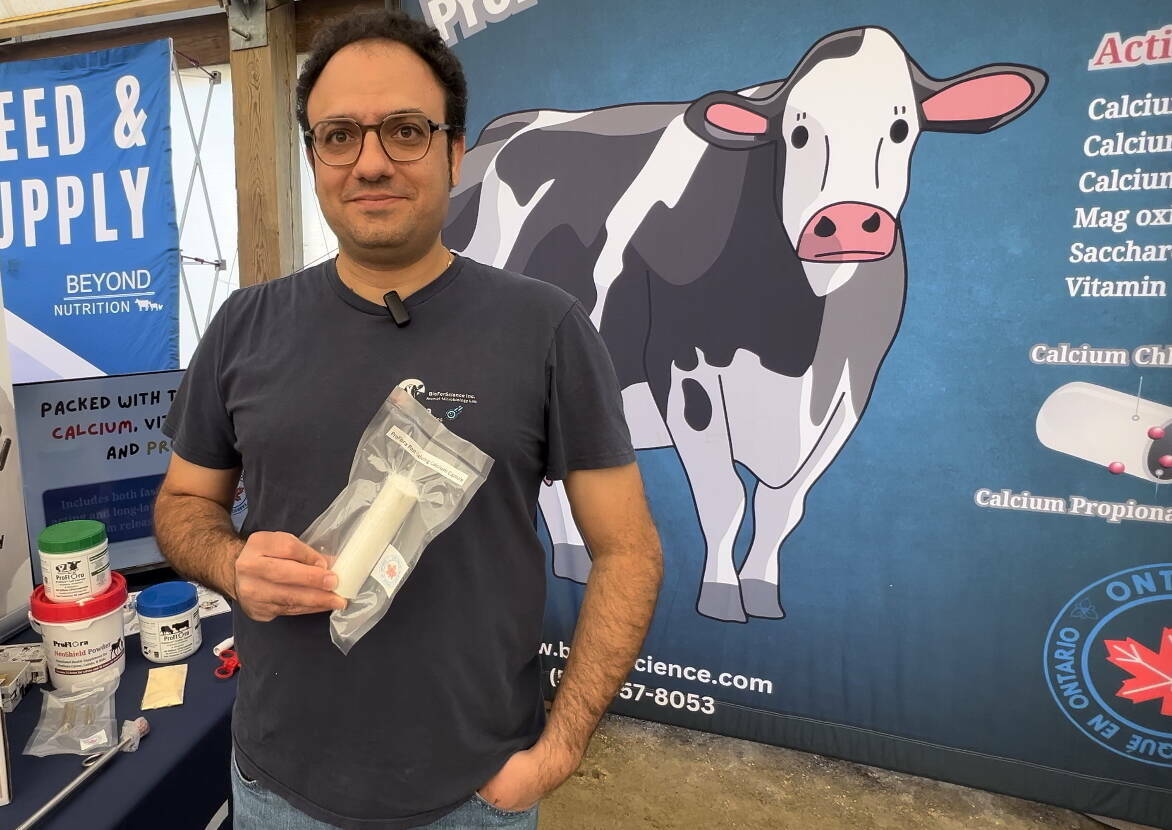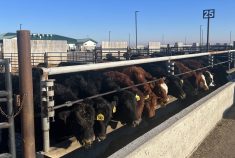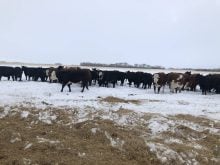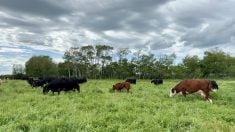Creep feeding is a management practice where nursing calves are fed supplemental feed while on pasture. Its economic benefits have been hotly debated by those in industry and academia alike. Those in favour point to the increased value of heavier calves at weaning, the potential sparing of summer forage supplies, and the health benefits associated with weaning calves that are already conditioned to eating dry feed from bunks or self-feeders. Those against the practice point to the fact that there can be a great deal of variation in the weight gain response of calves to supplemental feed, that the cost of creep and facilities can often outweigh the value of the expected gain and the fact that creep-fed calves can carry excessive flesh and as a result be discounted at market. In reality both sides of this debate make excellent points and with this article I would like to explore in more detail the pros and cons of this practice.
Read Also

Canadian Cattle Young Leaders, national Environmental Stewardship Award winner and more
Canadian beef industry news, including award winners and job changes.
The driving factor behind creep feeding should be a desire to increase calf weight gains on pasture, and as a result weaning weights, and to do so in an economically sustainable fashion. This means that the cost of supplying supplemental feed must be offset by the value of the extra gain. The question becomes: under what situation(s) does a calf benefit from supplemental feed?
Remember that every calf has an upper limit for growth that is genetically determined. Whether this potential is reached or not depends on a number of factors including milking ability of the dam and the quantity and quality of available forage. For example, take the case where there has been ideal spring and summer growing conditions. Pasture supplies are abundant and forage quality is close to ideal. In such situtations, there are minimal restrictions on the cow’s nutrient supply and as a result milk production is at a high level. The calf, particularly as it becomes a functioning ruminant, will supplement its nutrient supply from milk with that from the grass. In this scenario, the calf should be growing at or close to its genetic potential. The benefits of added creep under such conditions are questionable, as research has shown that the calf will simply substitute forage dry-matter intake with that from the creep feed. Any response in terms of weight gain is likely to be limited.
However, take the situation where spring/summer pasture conditions are not ideal. In such cases, the nutrition of the dam and the calf are compromised. Calf growth is restricted due to a limited intake of nutrients from forage and milk. A creep feed that supplies both energy and protein can be used to bridge this nutrient gap. It is important to note that in this situation, by supplying creep feed we are supplementing the existing nutrient intake of the calf and by so doing we correct a nutrient deficiency situation. As a result, calf weight gains (and weaning weights) are increased and the efficiency of the program is generally improved relative to the previous example. Creep feeding under such conditions will also help extend existing forage supplies and can lead to higher pasture stocking rates.
Another situation where creep feeding has been successfully employed is when cow-calf pairs are grazing mature pasture or stockpiled forages late in the grazing season. In such cases, forage intake by the calf is limited due to reduced rumen fibre digestibility which results from consumption of low-protein forages. Compounding this situation is the fact that the cow’s supply of milk naturally declines over the summer. In such cases, a high-protein creep ration is often fed. The supplemental protein will enhance fibre digestibility which in turn leads to increased dry matter and energy intakes and as a result, increased weight gain.
As evidenced from the above discussion, the response to creep feeding will ultimately be determined by environmental conditions that influence the calf’s nutrient supply. Such conditions will also dictate the nature of the creep feed provided. When one is looking to supplement energy and protein, as in the case of the second scenario above, cereal grains such as oat, barley and corn are often used as energy sources and are fed in combination with natural protein sources such as soybean meal or canola meal. Protein levels typically range from 14 to 16 per cent with total digestible nutrient content ranging from 70 to 74 per cent. Pelleted commercial creep products are also available that meet these nutrient specifications. Typically, this type of creep feed is fed free choice in restricted access facilities. In contrast, high-protein creep products are formulated with higher levels of soybean or canola meal or with other protein sources such as peas or lentil screenings. Crude protein levels are typically 18 per cent or higher. Daily intakes are often limited by including salt or other intake-limiting ingredients in the mix.
At this point it should be evident that creep feeding is not as straightforward as it may first appear. There is no doubt that in many situations it is a profitable management tool. However, as in all aspects of cow-calf production, one needs to balance the cost of production against potential returns when deciding to creep feed or not.

















